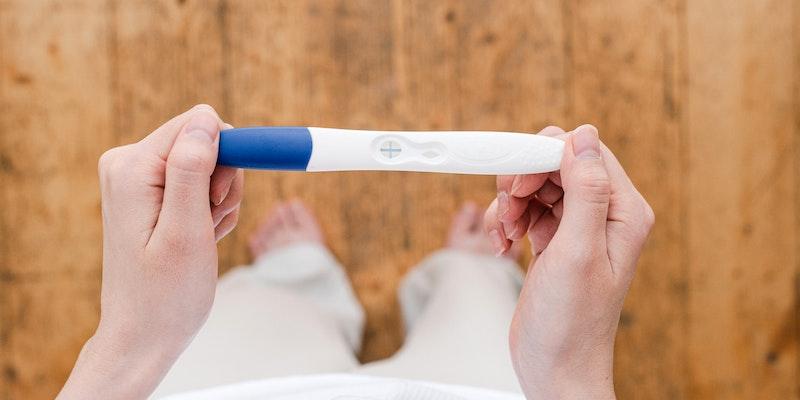Implantation bleeding, a phenomenon experienced by many individuals in the early stages of pregnancy, often leads to questions and sometimes concerns. As a pivotal part of the early pregnancy process, understanding implantation bleeding is essential for anyone trying to conceive or those curious about the early signs of pregnancy.
A Closer Examination Implantation Bleeding
Implantation bleeding is an early sign of pregnancy, marking when a fertilized egg connects to the protective uterine wall. This minor disruption in the endometrial lining can give rise to a short-lived bleeding episode. Although its occurrence may lead to questions and occasionally worries, it's typically a benign signal indicating the start of a potential new life.
Characteristics
- Color and Consistency: The implantation bleeding color often varies from light pink to brownish discharge. This hue notably differs from the vibrant red typically associated with menstrual blood. The brownish color indicates older blood, which has taken time to travel from the uterus to the exterior.
- Flow: Unlike regular periods, implantation bleeding tends to be much lighter in flow. It's rare, but some individuals may experience heavy implantation bleeding. However, this heavier flow should only persist for a short time. If it does, seeking medical advice is essential.
- Duration: It is a short-lived phenomenon, lasting from a few hours to two days. Its brief nature differentiates it from the lengthier period of a regular menstrual cycle.
Frequency and Commonality
Estimations suggest that as many as 25% of pregnant individuals might experience implantation bleeding. This statistic underlines its relative commonality, yet it remains a less discussed aspect of early pregnancy. Many may not recognize implantation bleeding symptoms, attributing the light spotting to other causes or conditions.
Factors Influencing Occurrence
Various factors can influence the likelihood of experiencing implantation bleeding:
- Age: Younger individuals, especially those in their prime reproductive years, might be more likely to notice implantation bleeding due to heightened reproductive hormone activity.
- Physical Factors: The depth at which the egg embeds itself in the uterine lining can influence the degree of blood vessel disruption, possibly affecting the noticeable symptoms of implantation bleeding.
Timeline of Occurrence

Given the average 28-day menstrual cycle as a framework:
- Day 1: The process commences with the onset of menstrual bleeding.
- Day 14: Ovulation peaks, allowing sperm to fertilize an egg.
- Day 14-15: If an egg is successfully fertilized post-ovulation, this period typically marks the beginning of its journey toward the uterus.
- Day 20-24: This is the crucial window where the fertilized egg, now transitioning into an embryo, makes its initial attachment to the uterine wall. It's within this period that implantation bleeding may manifest, approximately 6-7 days following successful fertilization.
Factors Affecting the Timeline
Though the 28-day cycle serves as a guideline, individual variations exist:
- Cycle Duration: Not every individual has a 28-day cycle. Some may have shorter or longer cycles, which could slightly modify the timeline of potential implantation bleeding.
- Ovulation Variability: The exact day of ovulation can fluctuate, even for those with regular cycles. This variability can shift the potential window for implantation bleeding.
Distinguishing Features of Implantation Bleeding
One of the foremost concerns for many is differentiating between implantation bleeding and the onset of a menstrual period. The two can appear similar, especially for those unfamiliar with the distinguishing characteristics.
Key Differences
- Color Distinctions: The implantation bleeding color often presents as light pink or brown, indicative of older blood. In contrast, menstrual bleeding is typically a brighter red, indicating fresh blood.
- Duration and Volume: Menstrual bleeding usually lasts about 3-7 days, while implantation bleeding is generally brief, spanning a few hours to two days. Those experiencing heavy implantation bleeding should observe its duration; if it lasts more than a couple of days, it's advisable to seek medical attention.
- Associated Symptoms: While some symptoms of implantation bleeding overlap with menstrual symptoms – like mild cramping – implantation bleeding may also be accompanied by other early pregnancy signs such as nausea and breast tenderness.
Physical Manifestations and Related Symptoms
For many, implantation bleeding provides an initial clue about a possible pregnancy. However, other signs and symptoms can accompany this phenomenon.
Commonly Observed Symptoms
- Spotting: This is the hallmark sign of implantation bleeding. The color can give away its nature: implantation bleeding color is typically light pink to brown, different from the vibrant red of a menstrual period.
- Mild Cramping: Some individuals report experiencing less intense cramps than menstrual cramps.
- Mood Fluctuations: Hormonal changes can lead to mood swings like premenstrual syndrome (PMS).
- Changes in Basal Body Temperature: A sustained elevated basal body temperature can occur during early pregnancy.
While these symptoms can hint at pregnancy, they're not definitive proof. A pregnancy test or consultation with a healthcare provider can offer confirmation.
Medical Perspective and Professional Insight
When to Seek Medical Attention
Recognizing the symptoms of implantation bleeding is vital. However, distinguishing between heavy implantation and other forms of vaginal bleeding can be crucial for health and well-being.
Guidelines for Medical Consultation
- Persistently Heavy Flow: If someone suspects they're experiencing heavy implantation bleeding that continues for more than 48 hours, it's essential to consult a healthcare provider.
- Associated Pain: Severe cramping, pain, or discomfort accompanying the bleeding might warrant medical attention. While mild cramps can be a symptom of implantation bleeding, intense pain is not typical and should be addressed.
- Other Symptoms: If the bleeding is accompanied by dizziness, sharp pains in the pelvis or abdomen, or any other concerning symptoms, immediate medical care is advised.
Causes and Biological Processes of Implantation Bleeding
Implantation is when a fertilized egg attaches itself to the uterus lining, setting the stage for the embryo's growth. But what prompts the implantation bleeding color or the occasional heavy implantation bleeding?
- Biological Mechanism: When the fertilized egg attaches, tiny blood vessels in the uterine wall can be disrupted. This can result in a minute amount of blood being released, causing implantation bleeding.
- Hormonal Role: Progesterone, vital for maintaining the uterine lining for a fertilized egg, can also be responsible for the bleeding. Some women might slightly drop this hormone, causing light bleeding.
Impact on Pregnancy
For many, spotting or the distinct implantation bleeding color can be the first sign of pregnancy. However, it's essential to recognize that not every pregnant person will experience implantation bleeding. The implantation bleeding symptoms might be subtle and brief, sometimes unnoticed.
Differentiating Factors and Observation

While understanding the symptoms of implantation bleeding is crucial, other variables can help differentiate it from different types of vaginal bleeding.
Distinctive Elements
- Consistency and Color: The implantation bleeding color is usually light brown or pink. It's this specific hue that often distinguishes it from menstrual bleeding.
- Timing: Implantation bleeding typically occurs about 6-12 days after ovulation, often before a period is due. This timeframe can be a pivotal clue.
- Accompanying Symptoms: The symptoms of implantation bleeding, like mood swings or tender breasts, can hint at early pregnancy.
The Importance of Observation
Keeping track of menstrual cycles, noting any spotting or changes like vaginal bleeding, and being attuned to the body's changes can play a pivotal role in identifying implantation bleeding.
Potential Complications and Concerns
While implantation bleeding is typically light, heavy implantation bleeding occurs. It can be concerning, leading many to wonder about its implications.
Factors to Consider
- Duration: If the heavy implantation bleeding persists for more than two days, it's advisable to consult a healthcare provider.
- Volume: If the bleeding becomes progressively heavier, rather than tapering off, it might not be implantation bleeding.
- Associated Symptoms: Severe pain, mainly when localized to one side of the abdomen, alongside heavy bleeding, could be signs of an ectopic pregnancy and warrant immediate attention.
Other Causes of Vaginal Bleeding
While implantation bleeding is one reason for spotting, there are various other potential causes for vaginal bleeding:
- Menses: Sometimes, what's assumed as implantation bleeding can be the onset of a period.
- Ovulation: Some women experience spotting during ovulation due to a slight dip in estrogen levels.
- Infections: Certain infections can cause spotting or bleeding.




